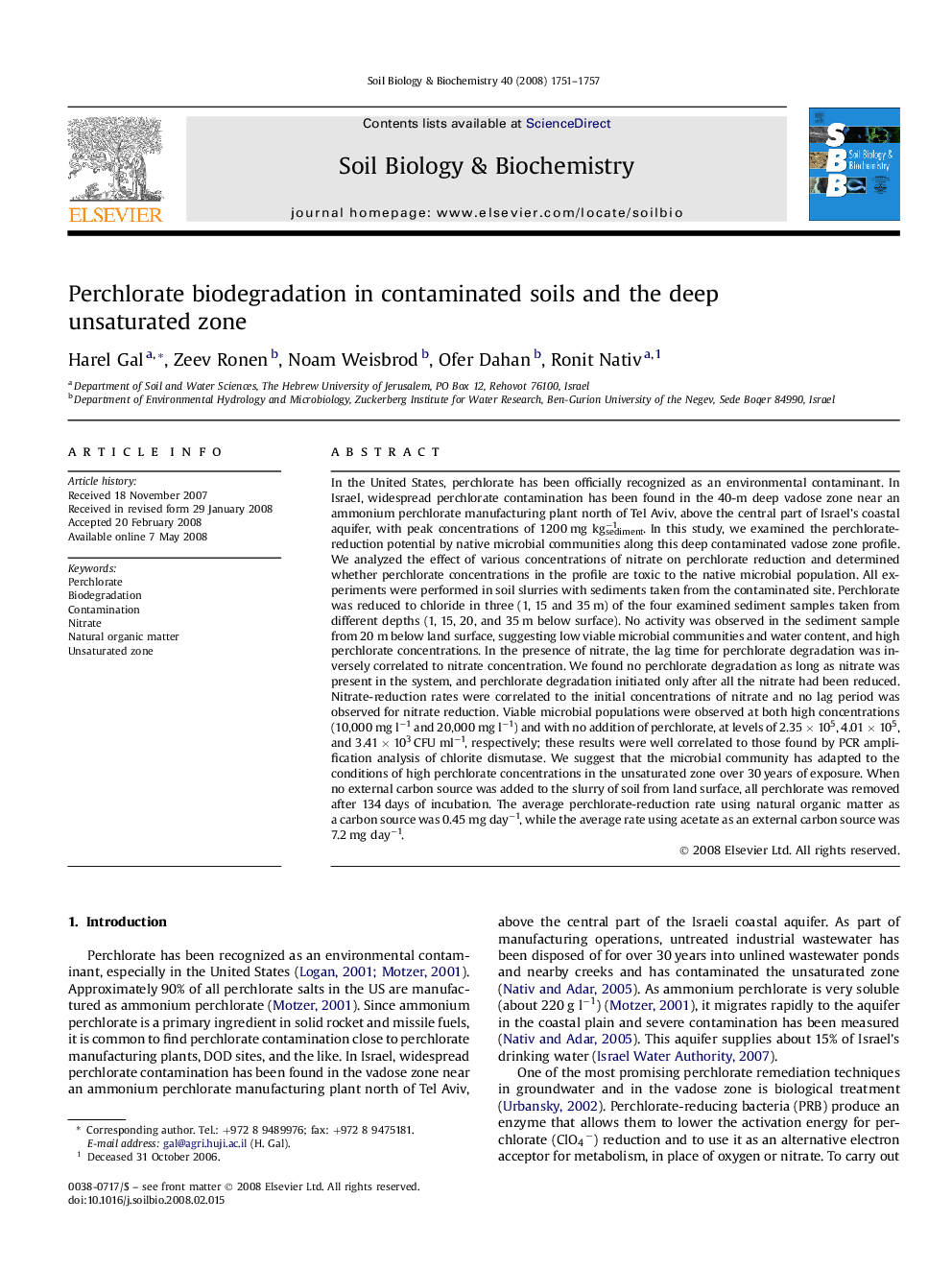| Article ID | Journal | Published Year | Pages | File Type |
|---|---|---|---|---|
| 2025828 | Soil Biology and Biochemistry | 2008 | 7 Pages |
In the United States, perchlorate has been officially recognized as an environmental contaminant. In Israel, widespread perchlorate contamination has been found in the 40-m deep vadose zone near an ammonium perchlorate manufacturing plant north of Tel Aviv, above the central part of Israel's coastal aquifer, with peak concentrations of 1200 mg kgsediment−1. In this study, we examined the perchlorate-reduction potential by native microbial communities along this deep contaminated vadose zone profile. We analyzed the effect of various concentrations of nitrate on perchlorate reduction and determined whether perchlorate concentrations in the profile are toxic to the native microbial population. All experiments were performed in soil slurries with sediments taken from the contaminated site. Perchlorate was reduced to chloride in three (1, 15 and 35 m) of the four examined sediment samples taken from different depths (1, 15, 20, and 35 m below surface). No activity was observed in the sediment sample from 20 m below land surface, suggesting low viable microbial communities and water content, and high perchlorate concentrations. In the presence of nitrate, the lag time for perchlorate degradation was inversely correlated to nitrate concentration. We found no perchlorate degradation as long as nitrate was present in the system, and perchlorate degradation initiated only after all the nitrate had been reduced. Nitrate-reduction rates were correlated to the initial concentrations of nitrate and no lag period was observed for nitrate reduction. Viable microbial populations were observed at both high concentrations (10,000 mg l−1 and 20,000 mg l−1) and with no addition of perchlorate, at levels of 2.35 × 105, 4.01 × 105, and 3.41 × 103 CFU ml−1, respectively; these results were well correlated to those found by PCR amplification analysis of chlorite dismutase. We suggest that the microbial community has adapted to the conditions of high perchlorate concentrations in the unsaturated zone over 30 years of exposure. When no external carbon source was added to the slurry of soil from land surface, all perchlorate was removed after 134 days of incubation. The average perchlorate-reduction rate using natural organic matter as a carbon source was 0.45 mg day−1, while the average rate using acetate as an external carbon source was 7.2 mg day−1.
